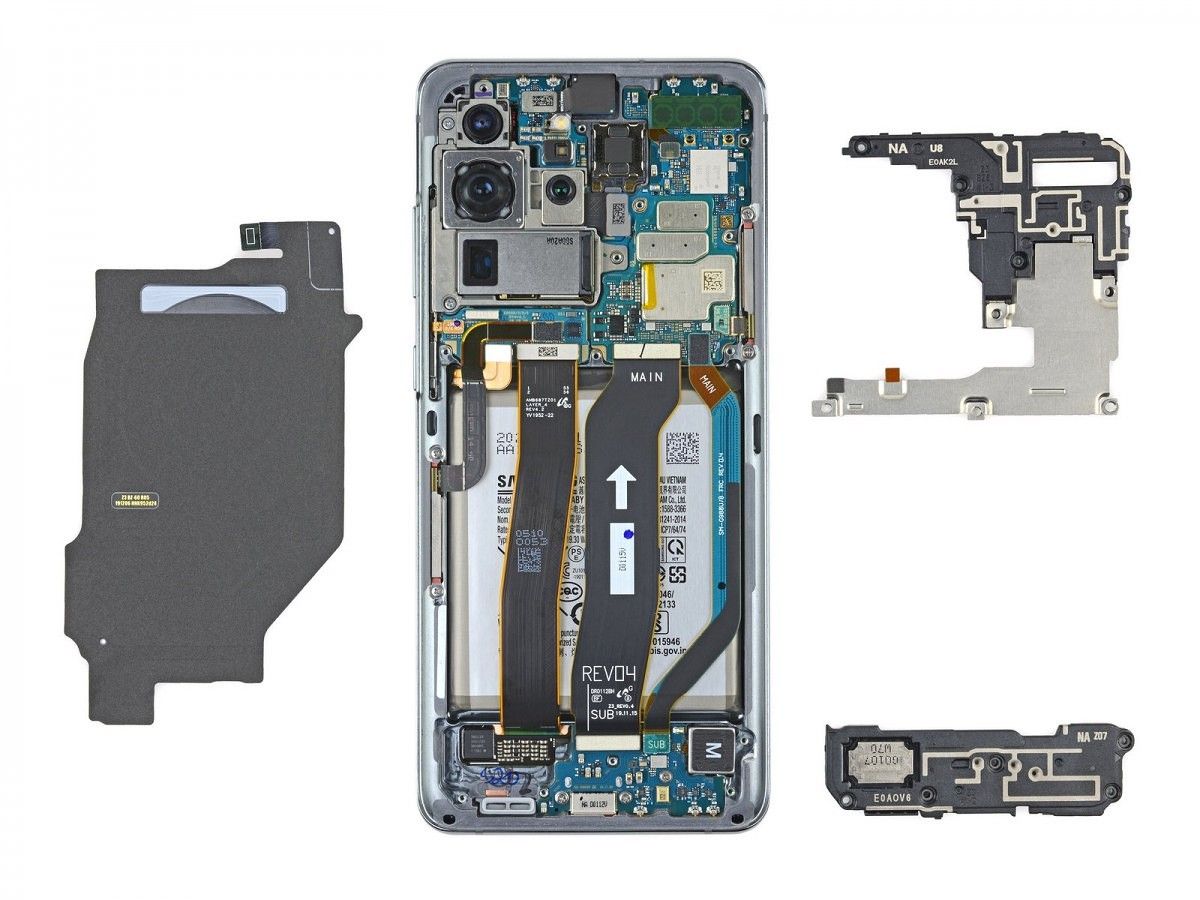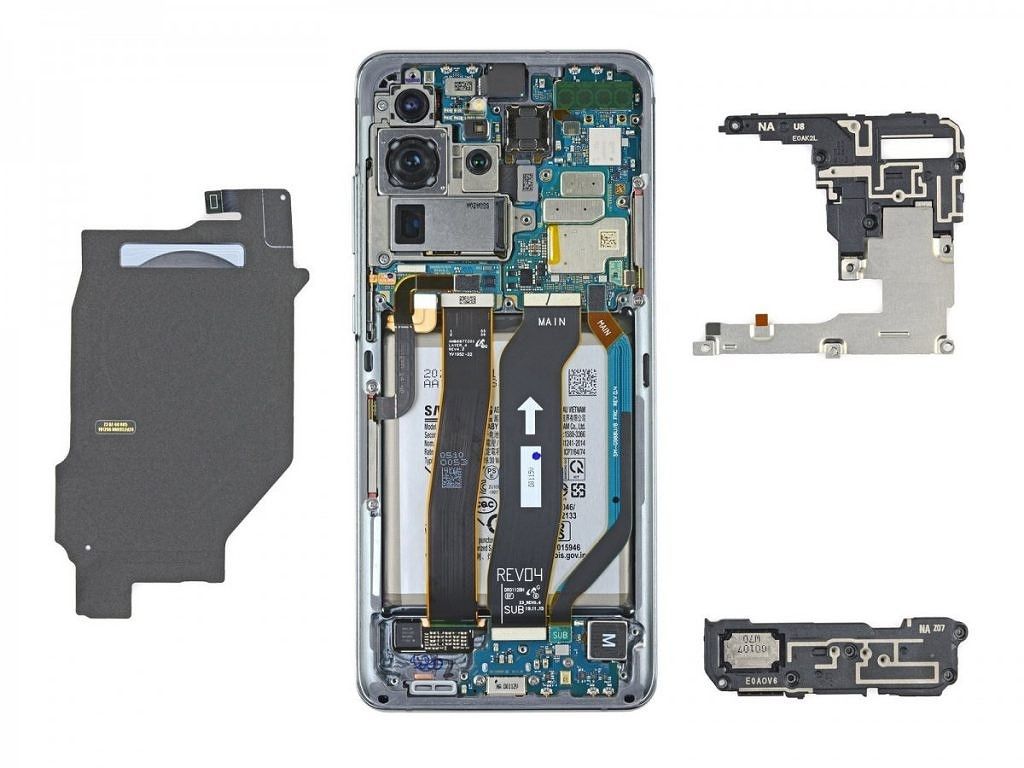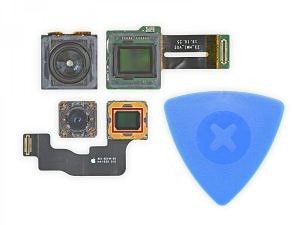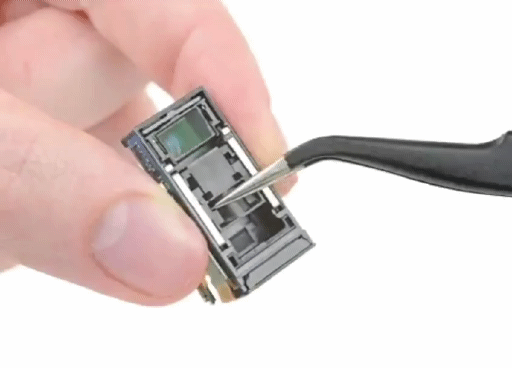The Galaxy S20 Ultra is Samsung's most expensive smartphone in the new Galaxy S line, and it features a variety of top-tier hardware features that Samsung hopes will justify that price. The biggest selling point of the phone is its camera setup. The S20 Ultra has a huge 108MP primary sensor that supports 3x3 pixel binning, a 48MP ~4x optical zoom camera, a 12MP ultra-wide-angle camera, and a 0.2MP time-of-flight sensor. iFixit just published a teardown of this beast of a smartphone to reveal the hardware magic behind the Galaxy S20 Ultra's 100X Space Zoom camera.
The first and most important part of the Galaxy S20 Ultra's camera setup is the main 108MP sensor. It's a massive sensor. The dimensions of the sensor measure 9.5mm x 7.3mm. The surface area of this sensor is actually double that of the iPhone 11 Pro's 12MP main sensor, according to iFixit. In order to compensate for the fact that packing 108 million pixels into such a small area makes for very tiny pixels (which results in noisy images in low-lighting conditions), the Galaxy S20 Ultra uses a "new material" that separates each pixel to "[minimize] optical loss and light reflection." Samsung's "nona-binning" basically involves taking a set of 3x3 pixels and combining them into one ultra-detailed pixel. That's why shots from the 108MP camera, by default, outputs at 12MP resolution.
The ~4x optical zoom camera is a more interesting camera. It uses a 48MP Sony IMX 586 sensor but has a few forms of stabilization. Samsung is using a rail connected to the box that houses the lens array to move the array back and forth for focus. The prism used to reflect light 90° into the sensor is also optically stabilized. This means that pictures captured from this lens are stabilized on multiple different levels. It's an insanely cool way Samsung is setting up this camera, and it's a system we have yet to see from any other OEM.
The internal silicon is just as impressive. Below is a list of chips that iFixit was able to find inside the Galaxy S20 Ultra. One impressive chip to note of is the 12GB of LPDDR5 RAM layered on top of the Qualcomm Snapdragon 865 chip. This is one of the first widely available devices with LPDDR5 RAM. You even have the option of getting an S20 Ultra in up to 16GB of LPDDR5 RAM.
- Samsung K3LK4K40BM-BGCN 12 GB LPDDR5 RAM layered over Qualcomm 865 SoC
- Samsung KLUDG4UHDB-B2D1 128 GB UFS 3.0 flash storage
- Qualcomm SDX55M 2nd-gen 5G modem
- Skyworks SKY58210-11 RF Front-End Module
- Qorvo QM78092 Front-End Module
- Maxim MAX77705C power management IC
- Qualcomm QPM5677 and QPM6585 5G power amplification modules
- Qualcomm SDR865 RF Transceiver
- Murata KM9D19075 Wi-Fi & Bluetooth Module
- Qualcomm PM8250 power management IC
- Qualcomm PMX55 power management IC
- Qualcomm PM8150C power management IC
- Qualcomm QDM4870 front-end module
- Qualcomm QBT2000 000 5R90777 HK940 07
- Samsung 1951 A S6SY79AX 6877DW3
The Samsung Galaxy S20 Ultra is an insanely powerful (and expensive) smartphone, but it isn't very repairable, sadly. iFixit only gave it a repairability score of 3 out of 10, which makes this "Ultra" phone feel a lot less ultra. iFixit gave the phone bad marks for the fragile glass rear cover, the difficulty in replacing the glued-down battery, and the difficulty in getting access to the display for repairs. If you're interested in the full teardown, check out the post on iFixit.
Galaxy S20 Forums ||| Galaxy S20+ Forums ||| Galaxy S20 Ultra Forums




